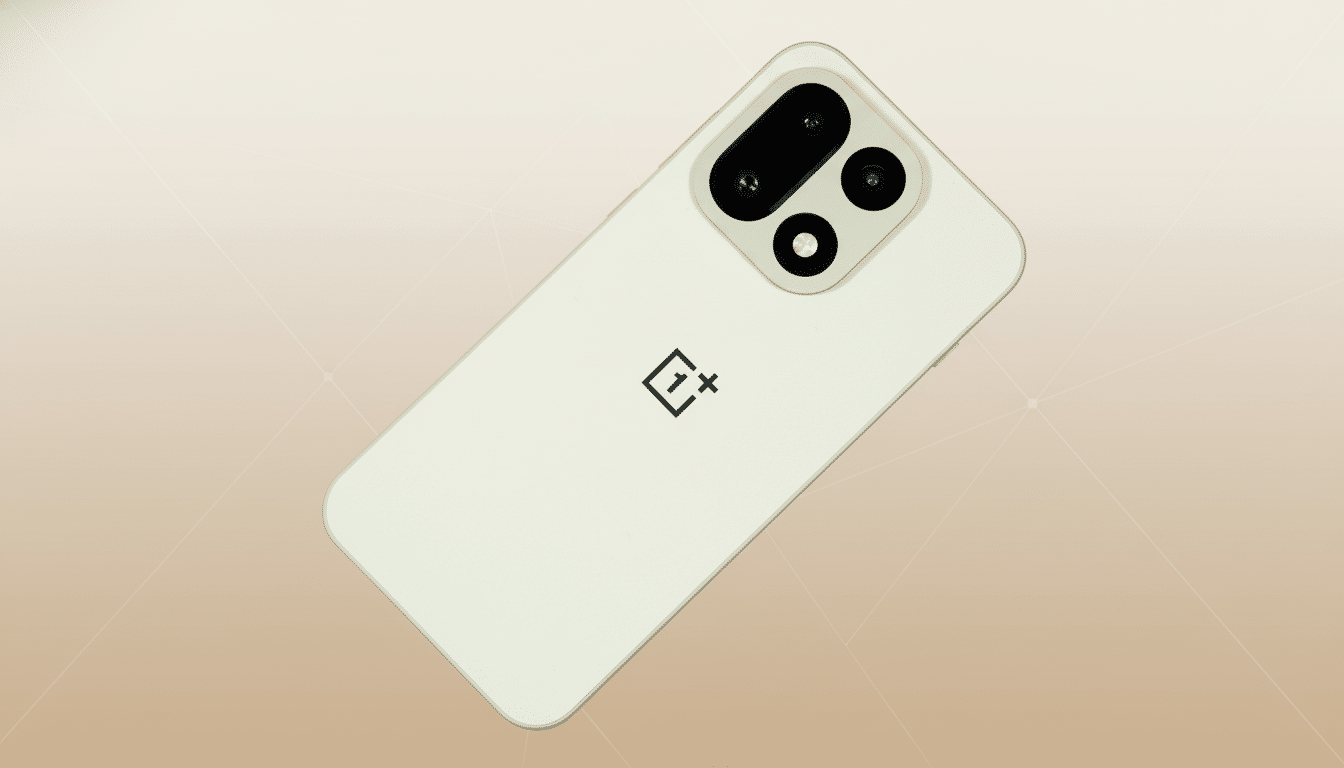OnePlus’ latest flagship didn’t merely survive a viral torture test — it aced it. At the hands of Zack Nelson of JerryRigEverything, a YouTube channel infamous for showing devices will bend at some point, the OnePlus 15 survived with structural integrity that places many glass-backed contemporary rivals on notice. From scratch-and-burn tests to the much-dreaded bend test, the device held up and, in some key ways, beat out most standard premium phones.
This isn’t marketing fluff. It’s the sort of real-world punishment that has snapped high-end handsets in half before — a previous OnePlus model included — and one of the most overt signs yet that the company designed this device for real-life abuse, not just spec sheet glory.
- Why This Torture Test Matters for OnePlus 15 Buyers
- The Difference Is in the Materials and Frame Design
- Sand Storm Finish Trading Scratches For Survival
- Real-World Implications for Buyers and Case Users
- How It Compares With Rivals in Drop and Bend Tests
- Bottom Line: A Tougher Flagship Built to Stay Pristine

Why This Torture Test Matters for OnePlus 15 Buyers
JerryRigEverything’s trio of Mohs hardness, flame resistance, and bend tests have become something of an initiation ceremony for flagships. Such failures in this category do not go quietly; they become the reputation of a phone. The OnePlus 10 Pro famously broke when bent a few years ago. This time, the OnePlus 15 barely blinked an eye — and is a strong indication that the brand has learned from its mistakes.
Independent data supports the stakes too. Yearly reports on breakability by Allstate Protection Plans have found that glass-backed phones frequently shatter the first or second time you drop them, and repairing those can be among the priciest fixes. A sturdy design is not just bragging rights — it saves money over the life of a phone, too.
The Difference Is in the Materials and Frame Design
With Gorilla Glass Victus 2, scratches up front happened as expected: superficial marks at level 6 and more noticeable grooves at level 7 on the Mohs scale. That’s in line with, and sometimes ahead of, recent flagships. Corning has billed Victus 2 as a step-forward technology that better survives when ground against rough surfaces like asphalt, and the OnePlus 15’s performance is in line with that promise. The screen burned with no significant discoloration or dead pixels — good signs about panel quality.
That’s where it gets interesting. OnePlus uses a micro-arc oxidation (MAO)-treated aluminum chassis, which results in an extremely dense ceramic-like oxide finish. The company says that this yields a material that’s 1.3× more resistant than titanium in its internal measurements. Marketing data should be looked at with skepticism, but the scratch and bend results are consistent with the notion that MAO is providing a meaningful hardening of the surface of the material as well as increased rigidity without extra mass.
On the inside, there’s a large 7,300 mAh dual-cell battery stored in a chassis that can withstand torsion. Batteries themselves don’t make the phone stronger, but a balanced internal design can reduce “flex” and help the frame disperse stress more evenly — something that a bend test here suggests OnePlus got right.
Sand Storm Finish Trading Scratches For Survival
The crucial decision is the back. The Sand Storm model uses an FRP (fiberglass-reinforced plastic) panel instead of glass. FRP is widely used in the automotive and aerospace industries for a reason: It absorbs energy and doesn’t shatter. The trade-off is purely cosmetic — it’s going to scuff more easily than toughened glass, obviously — but the payoff is huge. Concrete meets glass ends in spiderweb cracks; concrete meets FRP usually ends in a scuff you can live with.

This balance reflects what people actually do to phones. Drop damage, not micro-scratches, is the bank breaker. By not failing catastrophically, a back panel is one less way you’ll end up paying a $300 to $600 repair that takes your device out of your hands.
Real-World Implications for Buyers and Case Users
If you’re case-averse or just clumsy, the OnePlus 15 will be a real peace-of-mind move. A toughened front, an impact-resisting back and a reinforced frame mean that everyday mishaps — bumps on the couch, bends in your pocket, drops on the counter — are less likely to ruin an otherwise good day. Even if you’re a case user, a stronger chassis means less of a chance of uncaught microfractures that can increase over time.
“Repairability and longevity are intrinsically linked,” the repair advocacy group iFixit has long argued. And while this doesn’t speak directly to parts availability or modularity, you can tell that the OnePlus 15 attacks one side of this equation with unusual force.
How It Compares With Rivals in Drop and Bend Tests
Even the latest Galaxy and iPhone models, with strong frames and robust glass, still depend on brittle glass backs that can fail spectacularly after a single drop. This weakness is often emphasized in real-world drop tests. Going with an FRP finish on the Sand Storm variant, OnePlus takes a contrarian turn that serves to eschew showroom sheen in favor of surviving drops; the decision appears downright prescient in the wake of this stress test.
Simply put, many flagships move fast. Few are fearless. The OnePlus 15 is one of the latter.
Bottom Line: A Tougher Flagship Built to Stay Pristine
Having survived one of the internet’s most rigorous durability gauntlets, the OnePlus 15 has a legitimate case to be the toughest flagship you can actually buy today. Smart materials, a more intelligent back panel and rugged frame make for a phone that’s designed not just to look premium but stay that way.

